Tide House
Comprising a four-sided structure resembling the battered entryway of a typical three-family rental, “Tide House” was a site-specific installation temporarily on view along the Charlestown Waterfront at Menino Park. The detailed structure invited all to reflect on connections between the housing instability in Boston and future climate-related flooding predicted for Boston’s coastal and other shores.
Painted in warm tones reflecting the passage of time, with images of house residents emerging behind peeling wallpapers, and held above the ground by chains and a steel chassis, the structure appeared to float, with the literal instability of housing emphasized through subtle kinetic movement in the wind. Additionally, a thin layer of limewash, a nontoxic water-based paint that gave the piece a stone-like appearance when dry, turning translucent when wet, covered the entire structure. As this layer of lime slowly washed off due to prolonged weather exposure, figures and colors emerged as the piece shed its sterile monumental appearance and took on the textures and feelings of inhabited space.
Photo of “Tide House” by Eben Haines at Menino Park in Charlestown
Boston is built on filled-up tidal marsh and mudflats, with many safety hazards and negligent landlords. While in the past, this relatively unstable ground merely restricted our ability to build tall buildings, climate change has made these areas more and more vulnerable to periodic flooding.
A house provides more than protection; It displays the lives lived within its walls. In this piece, we can empathize with our neighbors being pushed out of their homes by monied interests, recognizing that everyone deserves more than basic shelter from the outside world.
Location: Mayor Thomas M. Menino Park, 98 16th St, Boston, MA 02129
Timeline: Was open from September - November of 2023
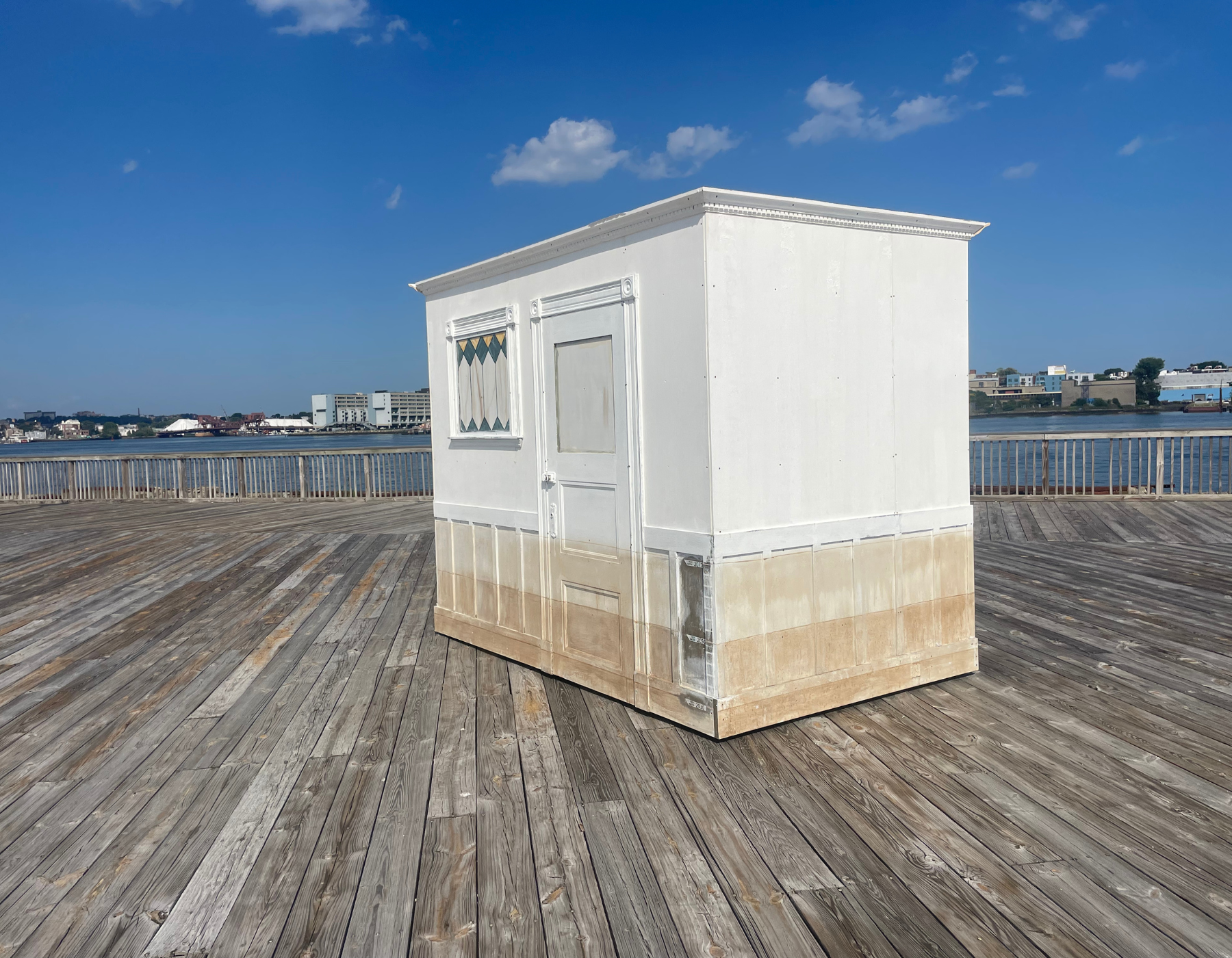
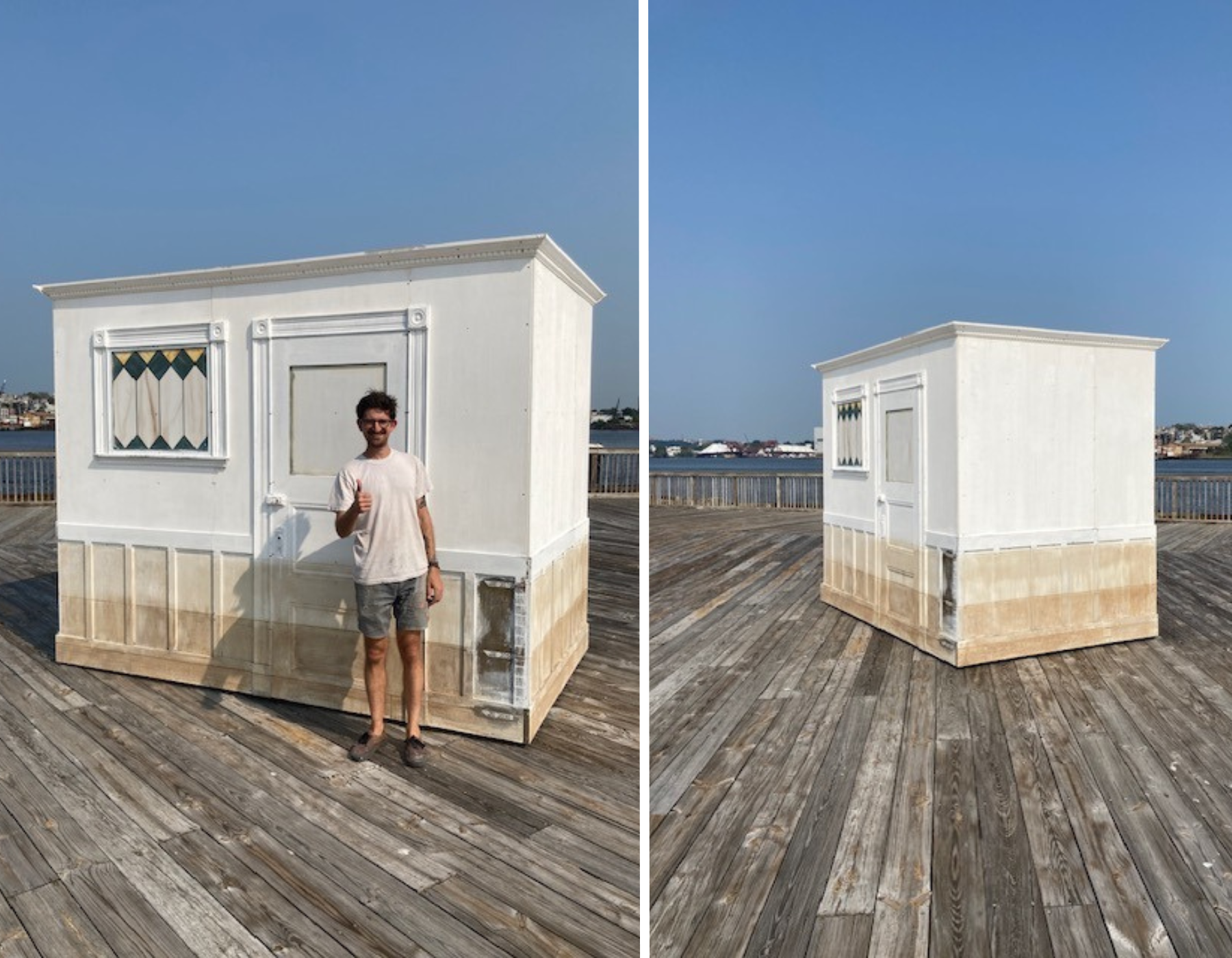

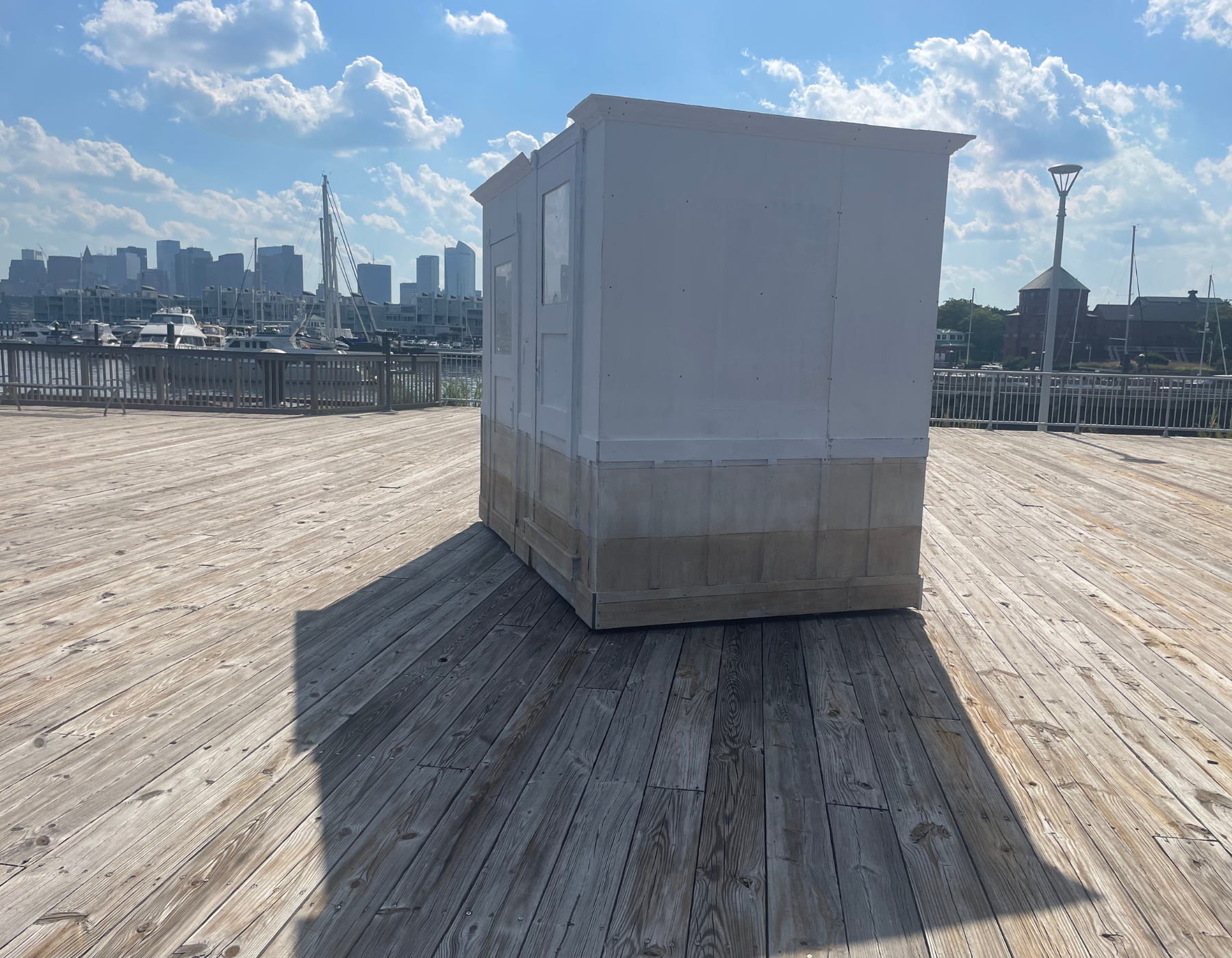
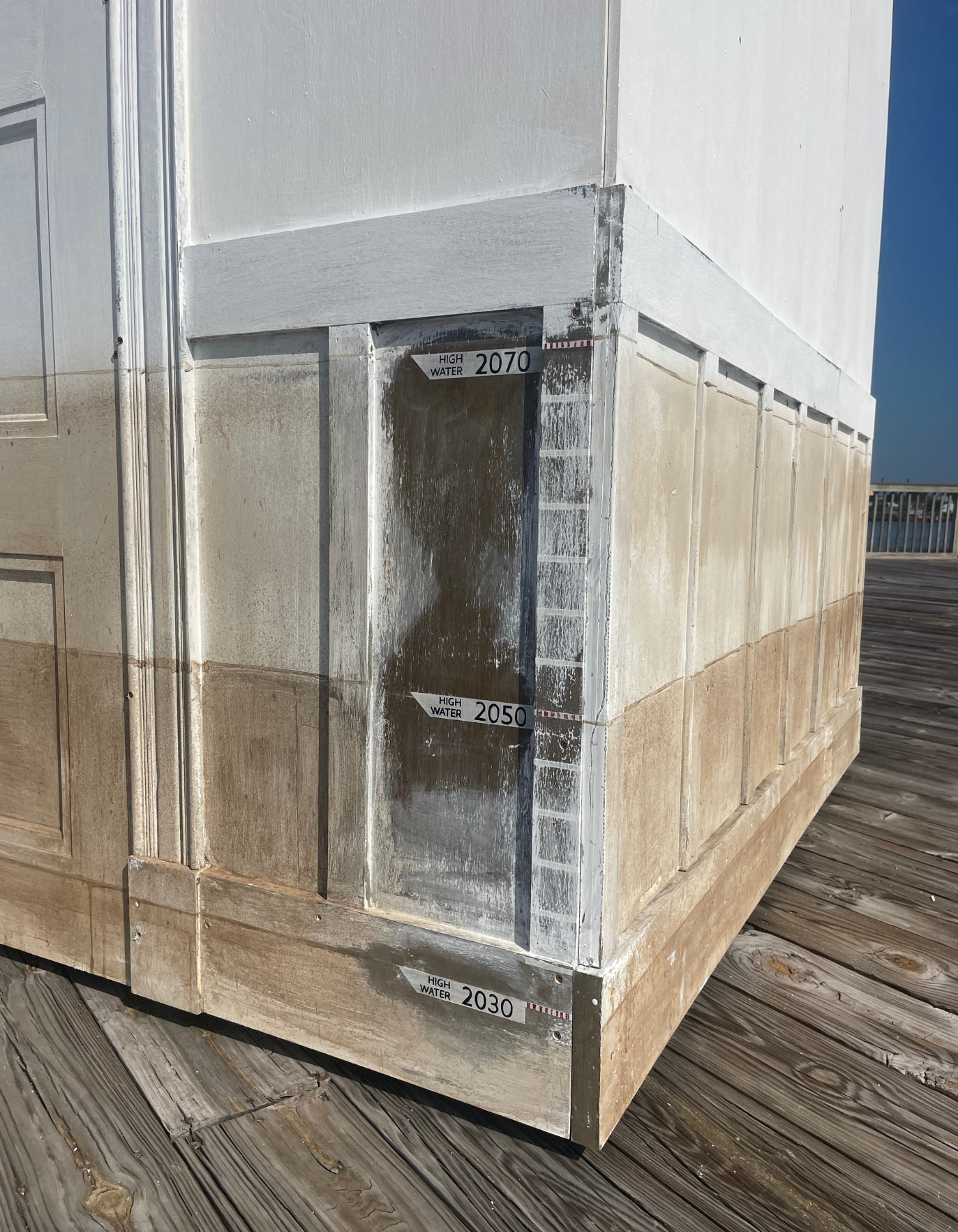
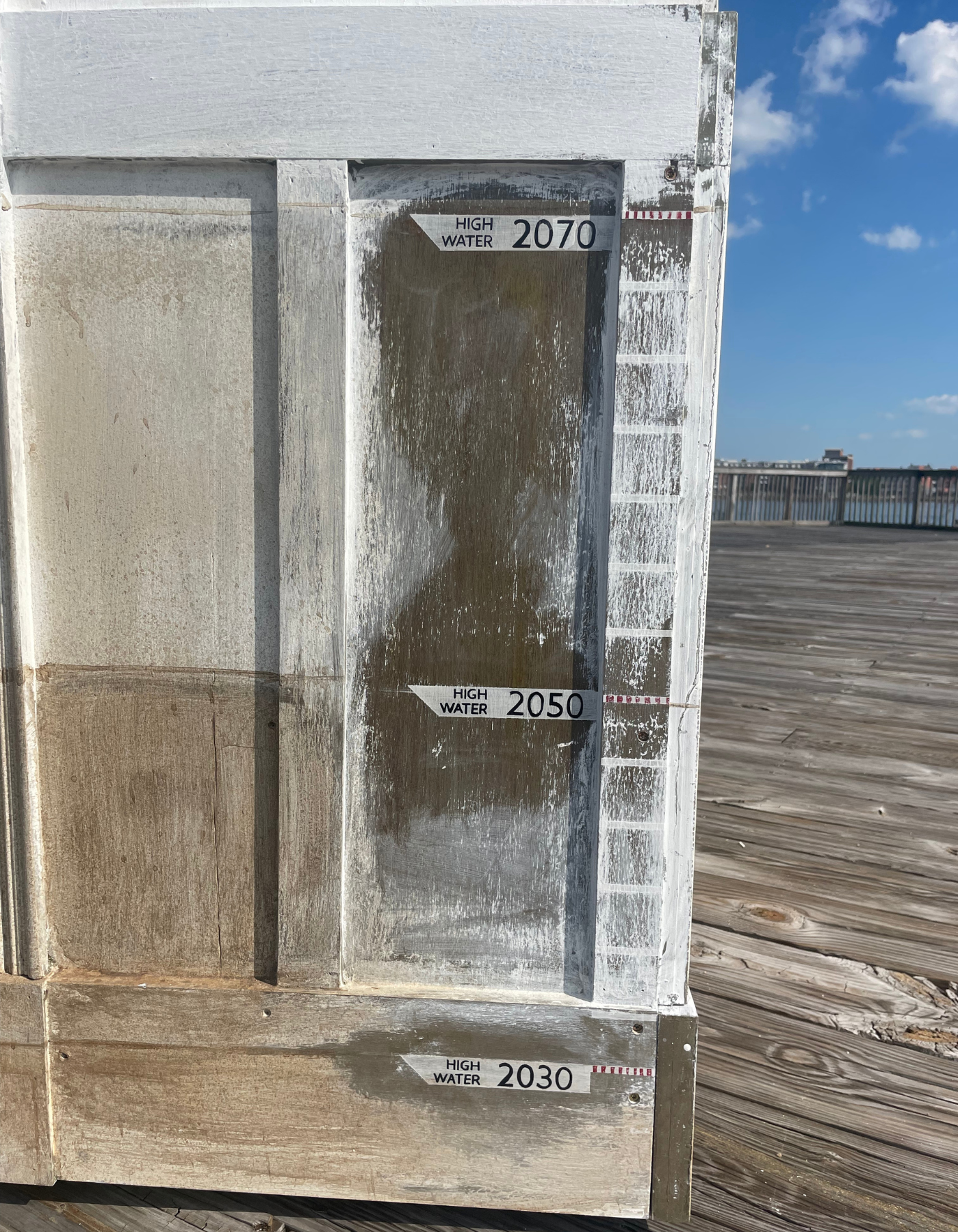
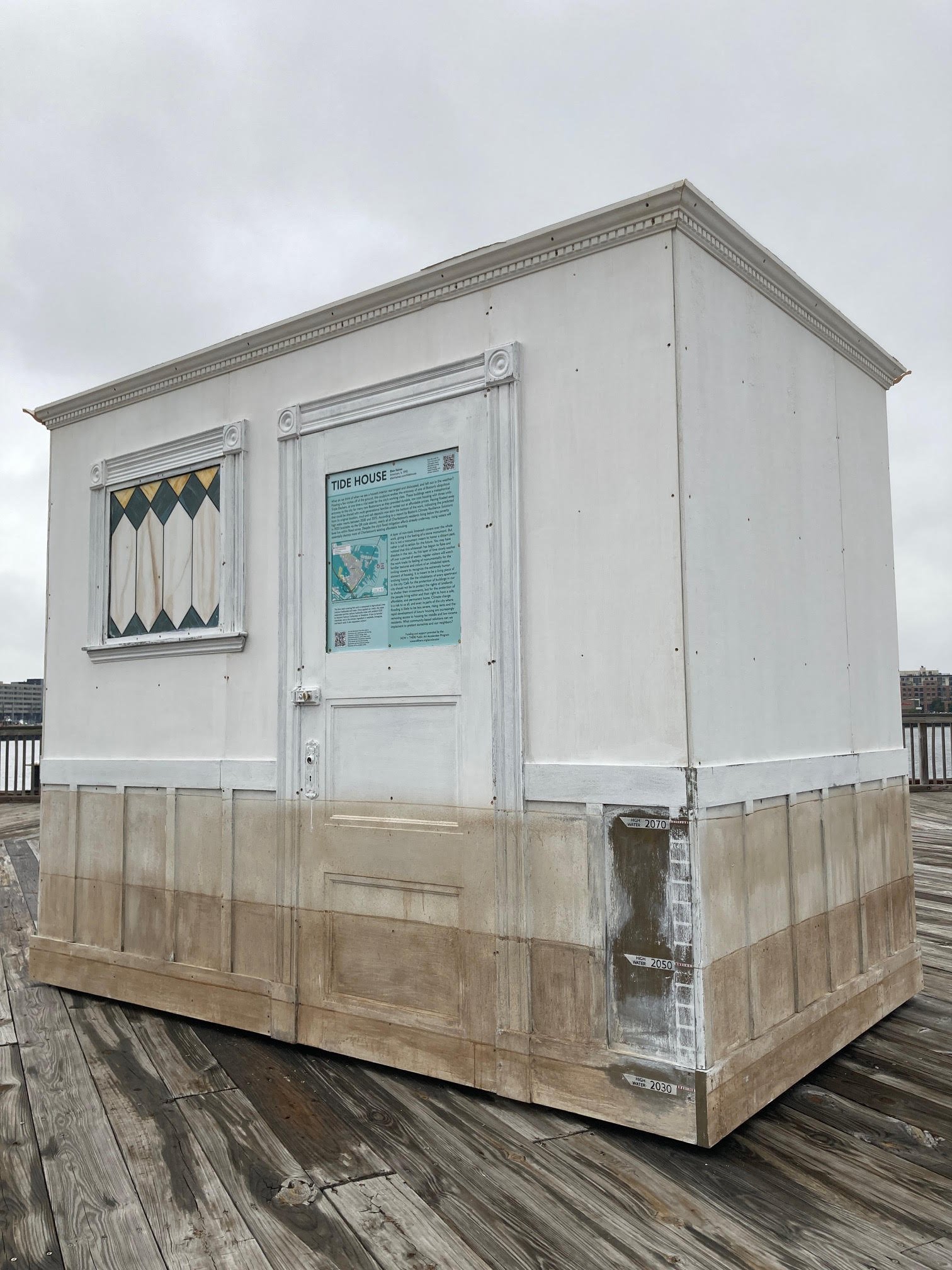
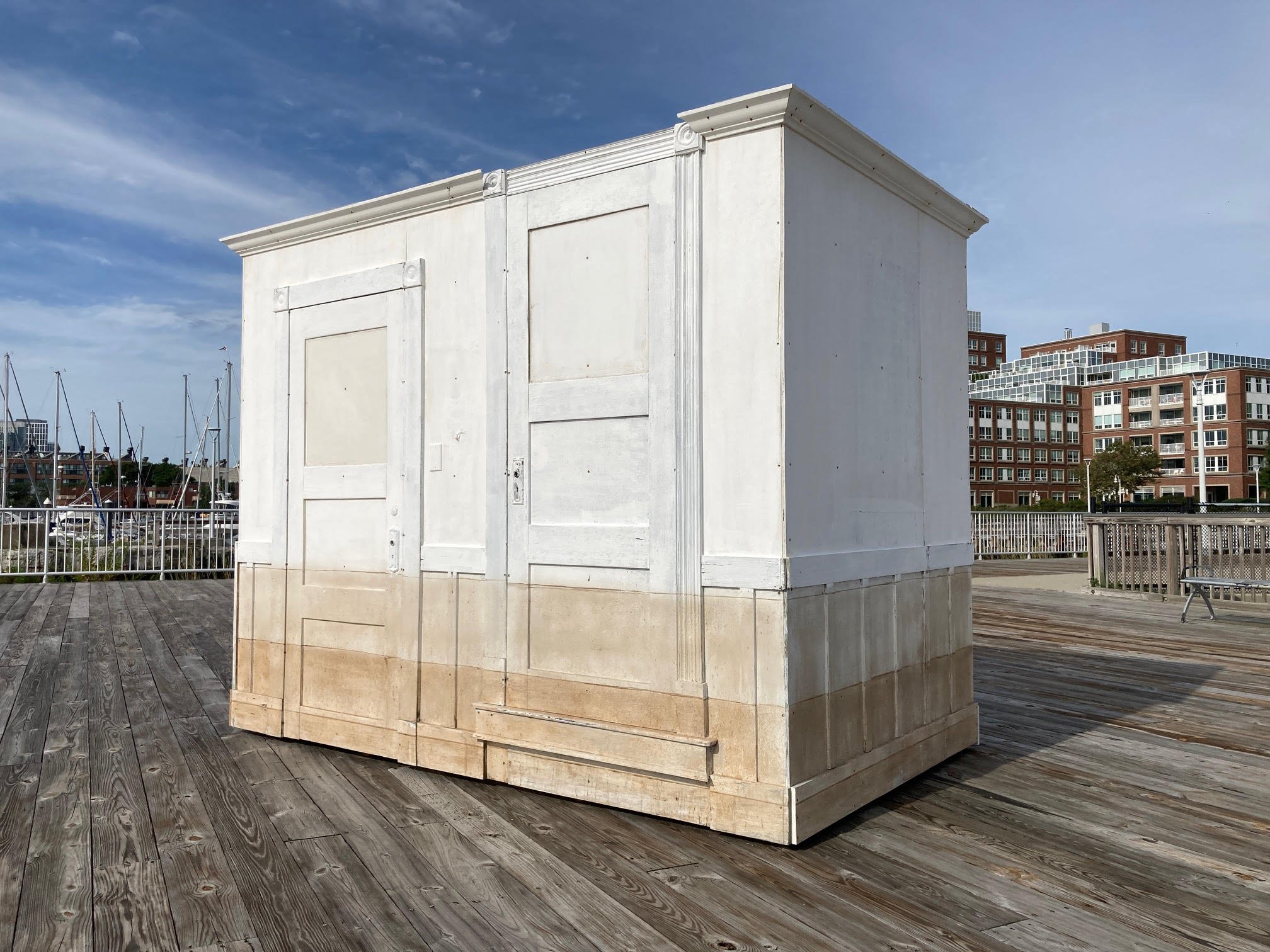
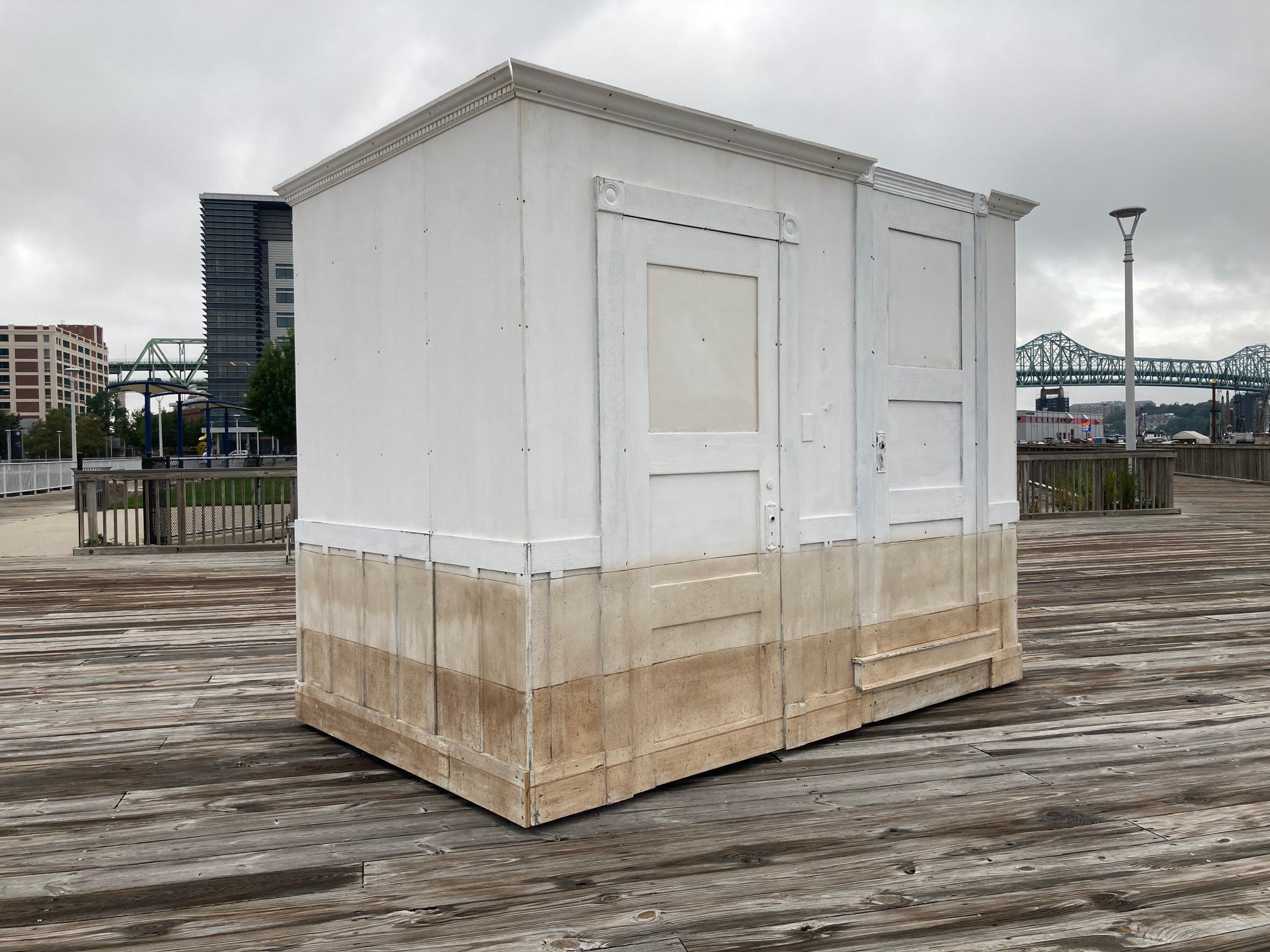
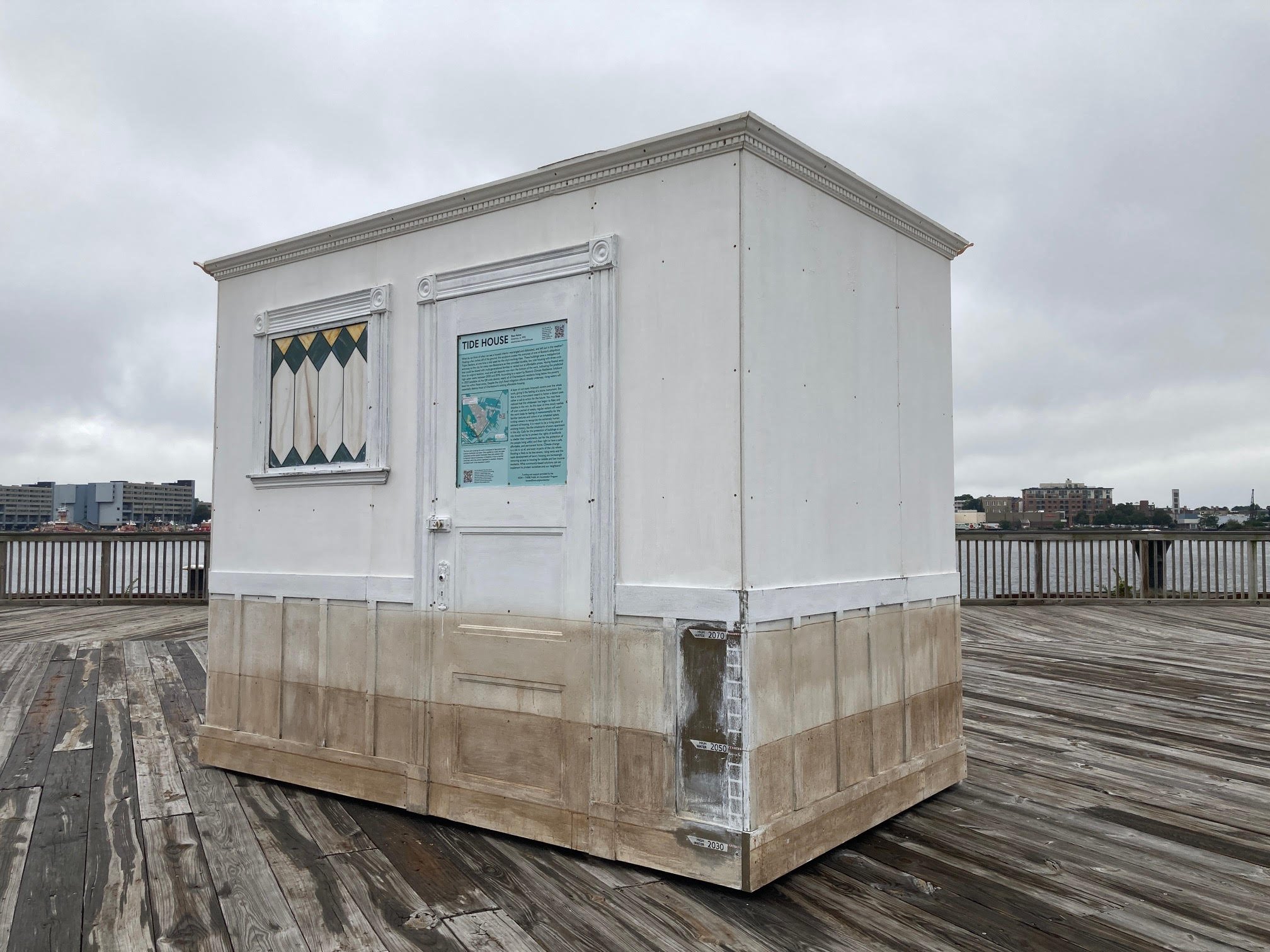
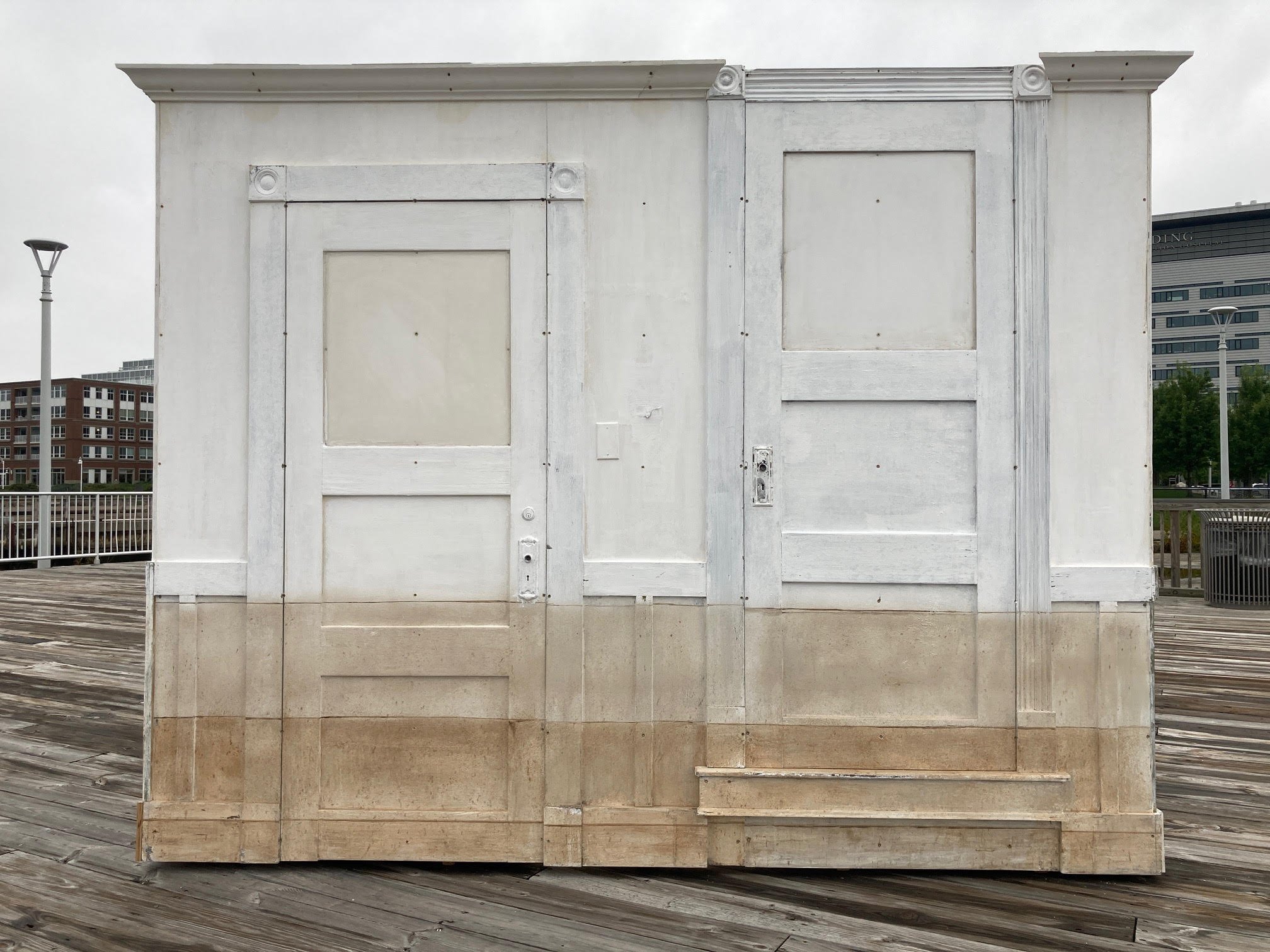
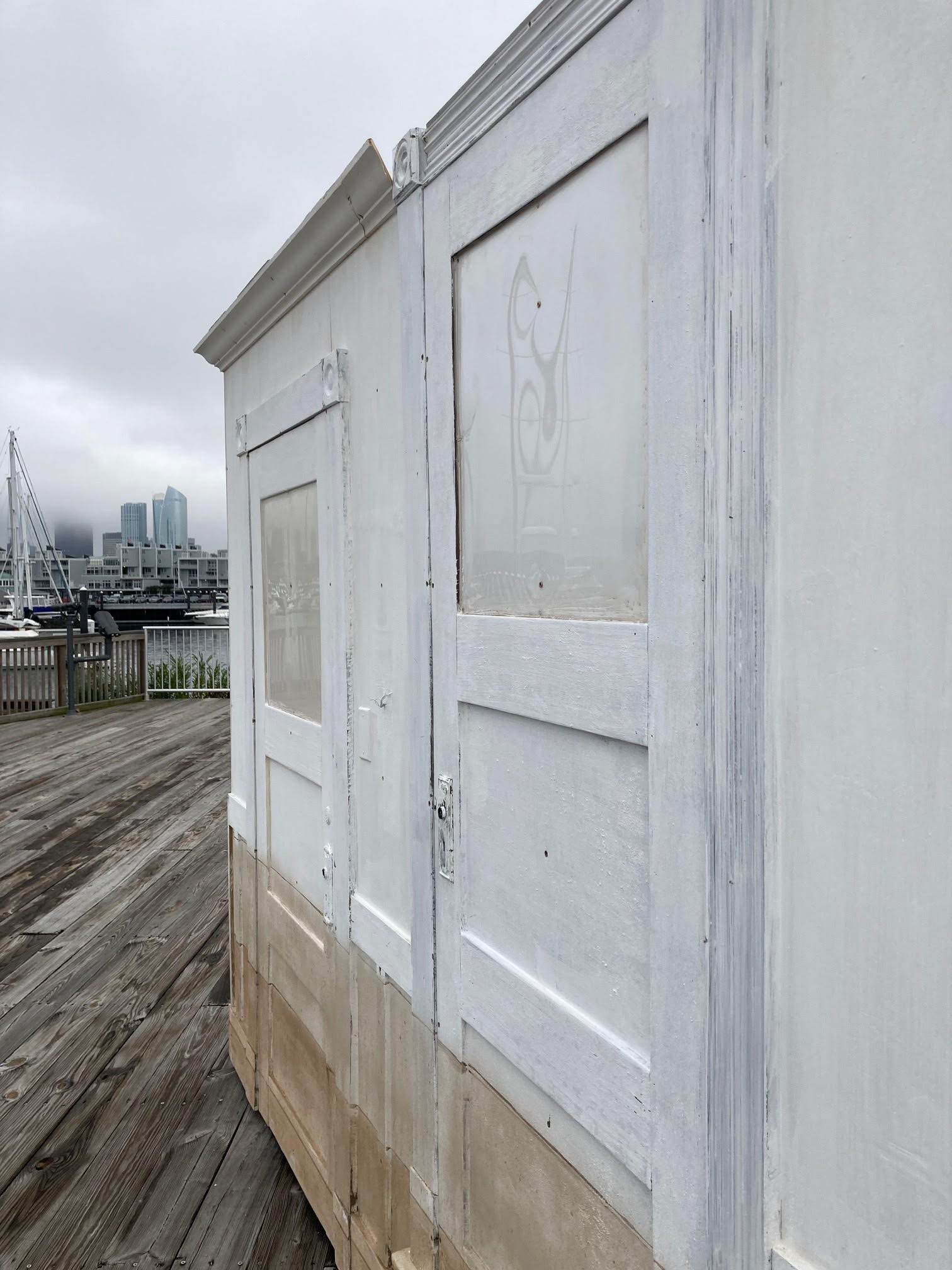
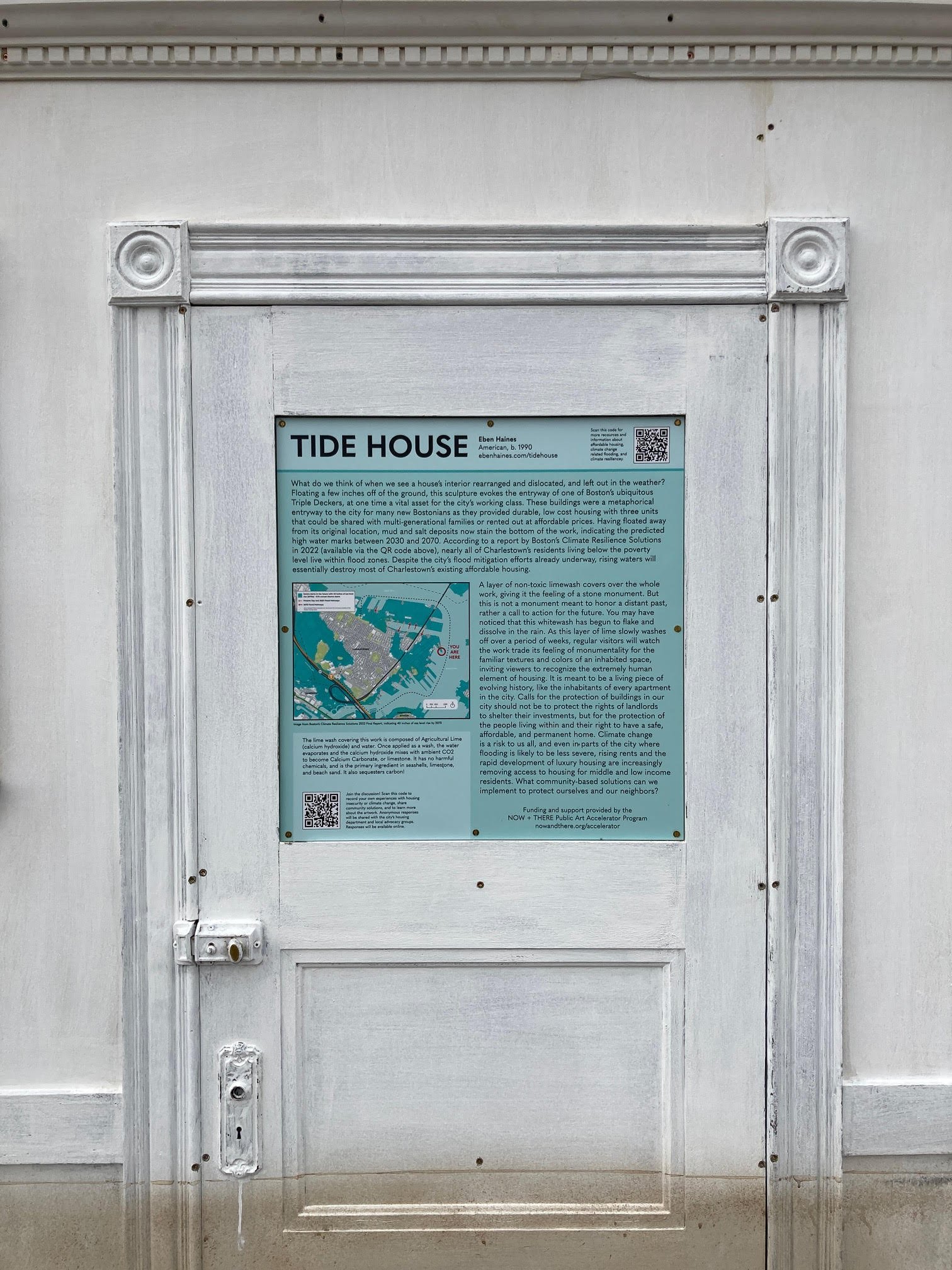
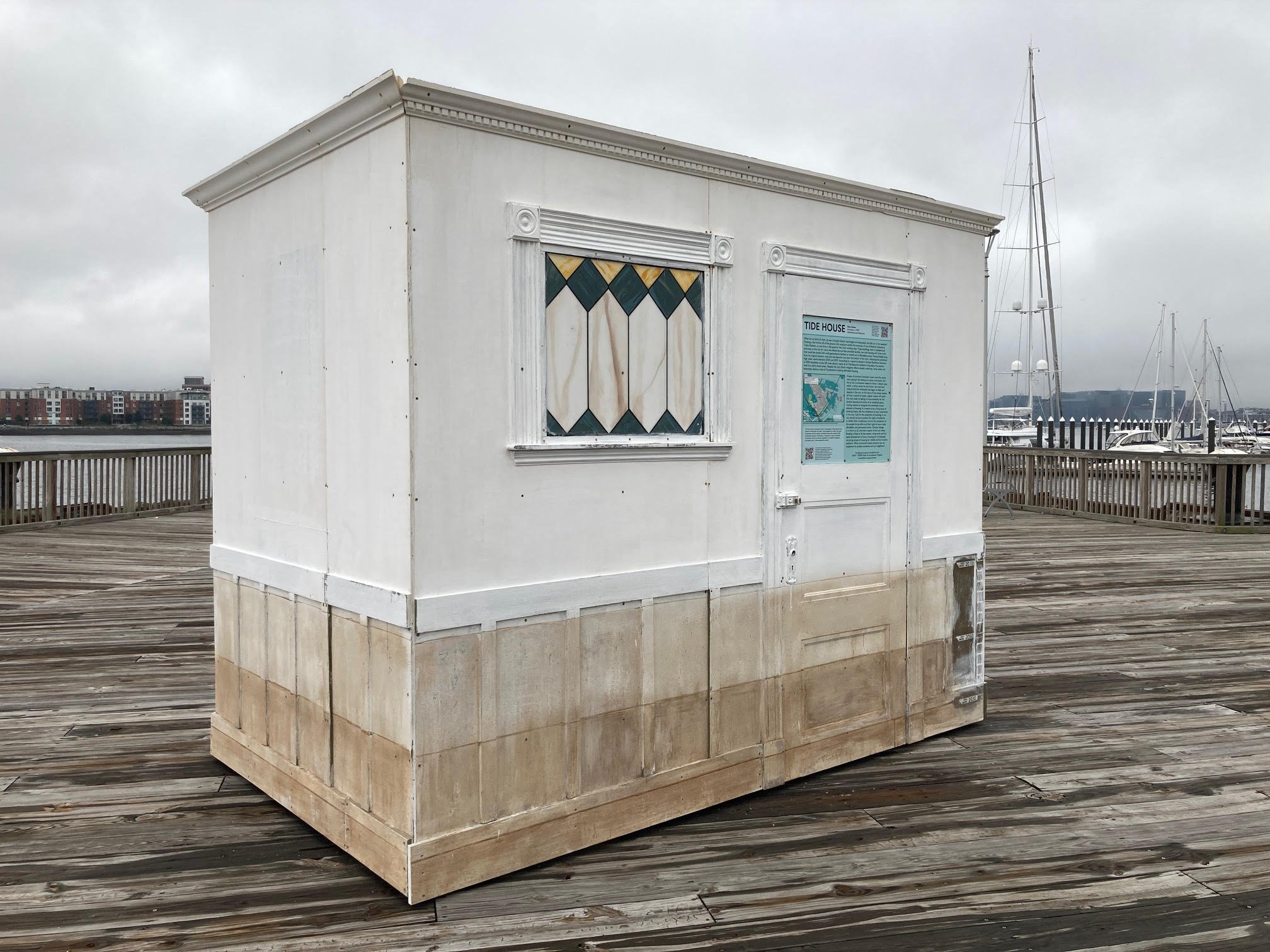
Engagement: Questions prompted viewers to share their experiences around housing and climate change. Some questions asked: - “What steps did you see the city taking in your neighborhood to address rising sea levels?” - “How did rising rents affect your living situation?” - “What steps did you think we could take as communities to help protect affordable housing?”
All the answers collected and other updates about the artwork were accessible each week for the project's duration.
Project rendering. Photo courtesy of the artist.
Project rendering. Photo courtesy of the artist.




